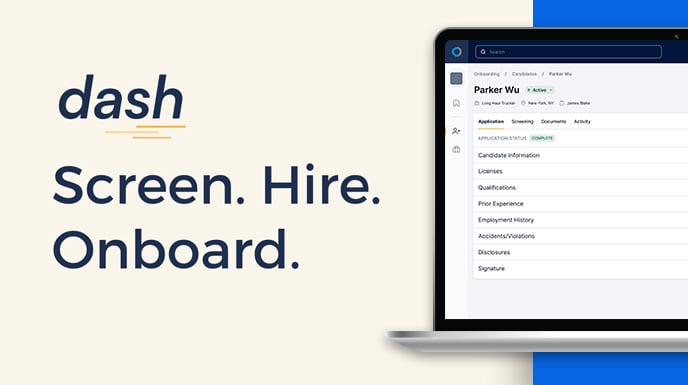How to Handle DOT Compliance During Trucking Mergers and Acquisitions

The latest news about mergers and acquisitions in the trucking industry: what you need to know about maintaining your DOT compliance in the finalization process.
If you’re considering a merger with, or acquisition of, another transportation company, there are numerous legal boxes to check. One of the most important factors that is often forgotten about in the process is the companies’ DOT compliance efforts.
As you’re working through the legal arrangements surrounding the merger or acquisition, you also need to keep the following questions in mind:
- Do I need a new USDOT number or MCS-150 form?
- Do I have a DOT compliance grace period during the merger?
- Do I need to create new driver files for the transferring employees?
There are specific answers to the above questions depending on your unique situation. Follow along to find out what you need to put in place before the ink dries on your final merger agreement.
Do trucking mergers and acquisitions require new USDOT numbers?
To answer this, we need to look into the purpose of USDOT numbers. They uniquely identify and track companies’ safety histories. If you were to acquire another business’ DOT number, you would also acquire their entire safety history – which is an inaccurate representation of your business. This is why the Federal Motor Carrier Safety Administration (FMCSA) does not allow the direct transfer of USDOT numbers.
Here is what should happen with DOT numbers during a merger or acquisition, according to the FMCSA.
If you are merging or acquiring a new corporation or partnership that has never registered with the FMCSA, a new USDOT number is required, and the FMCSA will consolidate the safety records.
If the merger or acquisition will result in the original corporation dissolving and ceasing operations under its original identity, you must file an updated MCS-150 form and select “Out of Business Notification” to notify the FMCSA of the change in operations.
If the merger or acquisition will result in one of the original corporations continuing to operate, a new USDOT number is not required; however, if there is a change in demographic information, such as company officials or address, an updated MCS-150 form must be filed within 30 days of the change.
Are there grace periods with DOT compliance during trucking mergers and acquisitions?
Unlike the answer above, this one is more cut-and-dry: there is no grace period given between the official merger and the beginning of operations. In fact, you cannot legally operate until you’ve purchased insurance, obtained a USDOT number (if applicable to your situation), registered your commercial motor vehicles, installed electronic logging devices (ELDs), marked your vehicles, and officially transferred or hired drivers.
You must also have the following DOT compliance programs in place before doing business:
- DOT drug and alcohol testing program
- DOT Clearinghouse registration and query management
- DOT-compliant driver application
- Digital driver qualification files
Consolidating your DOT compliance solutions can make the process of becoming federally compliant easier and faster for everyone involved.
The last bullet brings us to our next crucial point: the driver files of those employees included in the merger.
Do I need to create new driver files for the employees transferred during the merger?
If the employees are not required to apply for a new role at the new company, driver qualification files do not need to be created from scratch. Their employment must be continuous to use their existing files from the previous company/DOT number.
Once you’ve acquired the driver files, a note indicating the date of the merger or acquisition should be added to them to explain why a new motor carrier is associated with the files.
Taking a careful look at the existing driver files to ensure they meet DOT recordkeeping requirements is also worthwhile. A DOT enforcement officer will not allow a recent merger to be used as an excuse for missing or sloppy records during a compliance audit.
How can I be sure I have all the DOT compliance programs I need during a merger?
An all-in-one DOT compliance software (and a supportive account manager) are both all too important during trucking mergers and acquisitions.
Foley can consolidate your DOT compliance programs on one user-friendly platform. In it, you can access your employees’ DOT drug test and DOT physical results, driver files, background check findings, and more. You can also manage your DOT Clearinghouse queries and ensure you’re meeting all federal regulations surrounding them.
Foley specializes in permits and registrations as well. If you need assistance filing a new MCS-150 form, our compliance experts can walk you through the process.
And if your new merger results in needing more drivers to keep up with demand, our new hiring, screening, and onboarding software, Dash, is the perfect addition to your tech stack.
Get a free demo of our DOT compliance platform now and prepare for a seamless and successful merger, free of FMCSA violations or penalties.
Related Articles
50 Trucking & Transportation Terms You Need to Know
New to Managing DOT Compliance? Here's What You Need to Know - Part 2.
.png)




